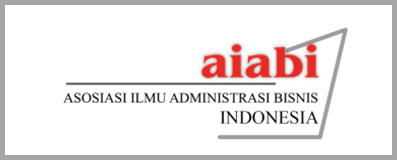Urgency and Impact of Green Taxes Implementation in Encouraging Green Business Post Covid-19
DOI:
https://doi.org/10.31334/bijak.v21i1.3636Keywords:
Green Taxes, Green Business, Covid-19Abstract
This study aims to examine the urgency, impact and strategy of Green Taxes in encouraging Green Business after the Covid-19 pandemic. This study uses a qualitative approach with a comparative descriptive type of research, in which the application of Green Taxes in various countries for the purpose of encouraging Green Business is compared to the conditions in Indonesia. The results of the research show that environmental damage due to industrial activities that occur in Indonesia can harm the country because, coupled with the COVID-19 pandemic, the end of which is not yet known, it will increase the state’s health spending. It. Many countries have successfully implemented Green Taxes and changed their business patterns to be environmentally friendly, although the negative impact of the green tax implementation, i.e. a decrease in net profit in the business sector, can result in layoffs and a decrease in tax revenue in several sectors. The application of Green Taxes in Indonesia is still at the level of the domestic tax function, which can be seen in the increasing target and realization of Green Taxes each year. The government must be more assertive in enforcing Green Taxes and be transparent in the use of the funds. Supervision in the implementation of the green tax policies must also be improved so that the expected goals can be achieved.
References
Adinda, N. (2019). Perusahaan Ramah Lingkungan, Unilever Peringkat 1 dan Kraft Heinz Paling Buncit. Retrieved from www.infografik.bisnis.com website: https://infografik.bisnis.com/read/20190227/547/894064/perusahaan-ramah-lingkungan-unilever-peringkat-1-dan-kraft-heinz-paling-buncit
Arros, P. (2015). Environmental Taxes in Canada Key Messages The Knowledge Base Benefits of environmental taxes. (May), 1–7.
Carattini, S., Baranzini, A., Thalman, P., Varone, F., & Vöhringer, F. (2017). Green Taxes in a Post-Paris world: Are Millions of Nays Inevitable? Environmental & Resource Economics2, 97–128. Retrieved from https://www.researchgate.net/publication/315592586_Green_Taxes_in_a_Post-Paris_World_Are_Millions_of_Nays_Inevitable
ÄŒekanaviÄius, L., BazytÄ—, R., & DiÄmonaitÄ—, A. (2014). Green Business: Challenges and Practices. Ekonomika, 74–88. Retrieved from https://www.researchgate.net/publication/330518705_GREEN_BUSINESS_CHALLENGES_AND_PRACTICES
CNN Indonesia. (2019). 10 Perusahaan Migas Hasilkan 30 Ribu Ton Limbah Beracun. Retrieved from www.cnnindonesia.com website: https://www.cnnindonesia.com/ekonomi/20190121174854-85-362567/10-perusahaan-migas-hasilkan-30-ribu-ton-limbah-beracun
Ekins, P., Summerton, P., Thoung, C., & Lee, D. (2011). A Major Environmental Tax Reform for the UK: Results for the Economy, Employment and the Environment. Environmental and Resource Economics, 50(3), 447–474. https://doi.org/10.1007/s10640-011-9484-8
Europian Union. (2013). Environmental Taxes: A Statistical Guide. Luxembourg.
Fikri, C. (2021). Tiga Dampak Pandemi Covid-19 Bagi Perekonomian Nasional. Retrieved from www.beritasatu.com website: https://www.beritasatu.com/ekonomi/728997/tiga-dampak-pandemi-covid19-bagi-perekonomian-nasional
Ghazouani, A., Xia, W., Jebli, M. Ben, & Shahzad, U. (2020). Exploring the role of carbon taxation policies on co2 emissions: Contextual evidence from tax implementation and non-implementation european countries. Sustainability (Switzerland), 12(20), 1–16. https://doi.org/10.3390/su12208680
Indonesia, K. L. H. dan K. R. (2017). Indeks Kualitas Lingkungan Hidup Indonesia 2017. Retrieved from https://www.menlhk.go.id/site/single_post/1551
Labeaga, J. M., & Labandeira, X. (2020). Economics of environmental taxes and green tax reforms. Sustainability (Switzerland), 12(1), 1–3. https://doi.org/10.3390/su12010350
Li, G., & Masui, T. (2019). Assessing the impacts of China’s environmental tax using a dynamic computable general equilibrium model. Journal of Cleaner Production, 208, 316–324. https://doi.org/10.1016/j.jclepro.2018.10.016
MacEachern, K. (2013). Market-Based Instruments Within the Green Economy. Conservation ONTARIO Natural Champions.
Makmun. (2009). Green Taxes Versus Green Insentive. Retrieved from www.fiskal.kemenkeu.go.id website: https://fiskal.kemenkeu.go.id/kajian/2009/07/21/115454-igreen-tax-versus-green-insentivei
Maxim, M. R., & Zander, K. K. (2020). Green tax reform in Australia in the presence of improved environment-induced productivity gain: Does it offer sustainable recovery from a Post-COVID-19 recession? Sustainability (Switzerland), 12(16). https://doi.org/10.3390/su12166514
Nong, D. (2019). A general equilibrium impact study of the Emissions Reduction Fund in Australia by using a national environmental and economic model. Journal of Cleaner Production, 216(July 2014), 422–434. https://doi.org/10.1016/j.jclepro.2019.01.193
Nurpratiwi, A. (2019). Mengurangi Dampak Kerusakan Lingkungan Dengan Pajak. Retrieved from www.news.ddtc.co.id website: https://news.ddtc.co.id/mengurangi-dampak-kerusakan-lingkungan-dengan-pajak-15078?page_y=1071
Nyman, P. (1998). Environmental Taxes - the Case of Sweden. Report 2012, 1–8.
Rademaekers, K., Laan, J. van der, Smith, M., Breugel, C. van, & Pollitt, H. (2011). The Role of Market-Based Instruments in Achieving A Resource Efficient Economy. Rotterdam.
Satria, D. N. (2021). PPh Badan yang Dipengaruhi oleh pendapatan dan Der Pada Perusahaan Transportasi di Bei. 13(1), 38–50.
Schlegelmilch, K., & Joas, A. (2015). Fiscal Considerations in the Design of Green Tax Reform. Green Growth Knowledge Platform Third Annual Conference: Fiscal Policies and the Green Economy Transition Generating Knowledge-Creating Impact, 1–57. Venice.
Selvi, Rahmi, N., & Rachmatulloh, I. (2020). Urgensi Penerapan Pajak Karbon di Indonesia. Jurnal Reformasi Administrasi, 7(1), 29–34. https://doi.org/https://doi.org/10.31334/reformasi.v7i1.845
Singhal, P. (2018). Environmental Regulations: Lessons from the Command and -Control Approach. DIW Berlin.
Sugiyono. (2017). Metode Penelitian Kuantitatif, Kualitatif, dan R&D. Bandung: Alfabeta.
Sumartiningtyas, H. K. N. (2021). 4 Skenario Asal Mula Virus Corona di Wuhan Menurut WHO. Retrieved from www.kompas.com website: https://www.kompas.com/sains/read/2021/02/11/070300223/4-skenario-asal-mula-virus-corona-di-wuhan-menurut-who?page=all
Weber, G., & Cabras, I. (2017). The transition of Germany’s energy production, green economy, low-carbon economy, socio-environmental conflicts, and equitable society. Journal of Cleaner Production, 167, 1222–1231. https://doi.org/10.1016/j.jclepro.2017.07.223
Worldometer. (2021). Covid-19 Coronavirus Pandemic. Retrieved from www.worldometer.info website: https://www.worldometers.info/coronavirus/
Xiao, B., Niu, D., Guo, X., & Xu, X. (2015). The impacts of environmental tax in China: A dynamic recursive multi-sector CGE model. Energies, 8(8), 7777–7804. https://doi.org/10.3390/en8087777
Downloads
Published
Issue
Section
License

This work is licensed under a Creative Commons Attribution-ShareAlike 4.0 International License
Please find the rights and licenses in Majalah Ilmiah Bijak By submitting the article/manuscript of the article, the author(s) agree with this policy. No specific document sign-off is required.
- License
The commercial use of the article will be governed by the Creative Commons Attribution license as currently displayed on Creative Commons Attribution-ShareAlike 4.0 International License.
2. Author(s)' Warranties
The author warrants that the article is original, written by stated author(s), has not been published before, contains no unlawful statements, does not infringe the rights of others, is subject to copyright that is vested exclusively in the author and free of any third party rights, and that any necessary written permissions to quote from other sources have been obtained by the author(s).
3. User Rights
Majalah Ilmiah Bijak spirit is to disseminate articles published are as free as possible. Under the Creative Commons license, Majalah Ilmiah Bijak permits users to copy, distribute, display, and perform the work for non-commercial purposes only. Users will also need to attribute authors and Majalah Ilmiah Bijak on distributing works in the journal and other media of publications.
4. Co-Authorship
If the article was jointly prepared by more than one author, any authors submitting the manuscript warrants that he/she has been authorized by all co-authors to be agreed on this copyright and license notice (agreement) on their behalf, and agrees to inform his/her co-authors of the terms of this policy. Jurnal Bijak will not be held liable for anything that may arise due to the author(s) internal dispute. Majalah Ilmiah Bijak will only communicate with the corresponding author.
5. Miscellaneous
Majalah Ilmiah Bijak will publish the article (or have it published) in the journal if the article’s editorial process is successfully completed. Jurnal Bijak editors may modify the article to a style of punctuation, spelling, capitalization, referencing and usage that deems appropriate. The author acknowledges that the article may be published so that it will be publicly accessible and such access will be free of charge for the readers as mentioned in point 3.
Every accepted manuscript should be accompanied by "Copyright Transfer Agreement"prior to the article publication.





1.png)




